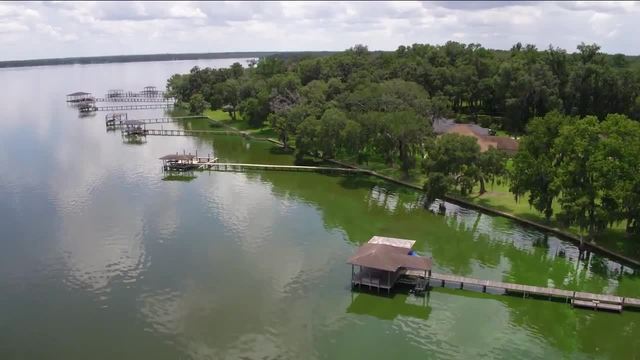
A sort of rapid response plan is in the works in the St. Johns River Water Management District (SJRWMD) to take on harmful algal blooms before they get out of control.
These blooms can appear in nearly any water body in the district.
“These photos show how blooms can form floating mats and aggregate along shores, and in canals and coves,” said Dean Dobberfuhl, Chief of the district’s Water Resources Bureau, at the SJRWMD Governing Board’s latest meeting. “These thick mats can have high concentrations of toxins, and of course they ultimately decay and cause aesthetic problems.”
Dobberfuhl showed images of these effects to the Board as they occurred in Lake Minneola two years ago, west of Orlando, and the bad St. Johns River bloom in 2005.
“The algal bloom response plan needs to be rapid,” he said. “Algal blooms develop quickly, and in response, appropriate intervention needs to be rapid, so that early treatment is applied. To this end, an inventory of algaecides provides for rapid deployment to address these blooms.
“DEP (Department of Environmental Protection) funding will allow pre-purchase of algaecide products, and these algaecide inventories can be placed at multiple locations to treat water bodies throughout the district.”
The revenue agreement between DEP and the SJRWMD is to allow for any related budget transfers necessary for the district to receive grant funding of up to $500,000 to purchase algaecides and services to treat these blooms.
Board member Cole Oliver inquired as to what district staff know about any unintended effects from the algaecides.
“There’s a lot of … commentary in the community related to the application of herbicides on different areas within the canals being what is leading seagrass to decline in the (Indian River) Lagoon,” Oliver said.
It’s not an easy question to answer.
“There’s many, many different algaecides out there that are formulated to treat different algae species and different aspects of an algal bloom,” Dobberfuhl said.
“When I say ‘algaecide,’ that covers a broad range of potential products. Many of these products have been used for a long time in lake and pond management applications, so many of the products are very well tested and are designed not to affect off-target species.”
They would do their due diligence though, he added, to make sure they use the right product for the right algae.
Board member Chris Peterson asked about ways the district could promote the benefits of the treatment process, considering what he expects in public pushback.
“We have not yet discussed any details about outreach,” Dobberfuhl said. “I think that needs to be a necessary part of this — that’s a good point. At the end of the day, before-and-after pictures speak loudly. I think that would be an important component of our outreach.”
Communication is a significant part of the process, Board Chairman Rob Bradley said.
“This is an important issue — obviously, this is something that concerns all of our communities throughout the district,” Bradley said. “We want to make sure we get this right, and make sure that the information that is exchanged with the public is correct and effective in communicating what the effects are going to be of these potential treatments.”




2 comments
Yeah
August 10, 2022 at 5:09 pm
And this will be in-between the sewage dumped in there from the thousands moving down there
Just a comment
August 10, 2022 at 7:15 pm
Either people are plain idiots or do they see the rapid changes streaming this way pray you do not flood out and drown
Comments are closed.